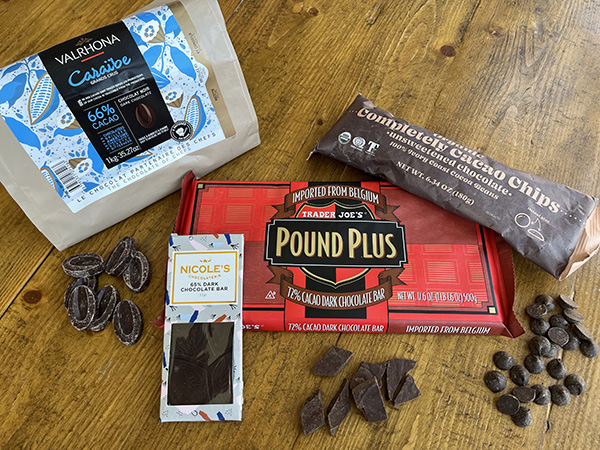
By Chris Rotolo
From a young age, children are often taught to associate the consumption of chocolatey treats with rotting teeth, the grind of mechanized dental instruments and painful cavity-filling experiences.
But demonizing chocolate isn’t the answer, said Rachel Tansey of the Rutgers University Cooperative Extension of Monmouth County. Instead, teaching young ones about moderation is crucial to squashing the folklore surrounding the sweet, and bringing its health benefits to light.
“If I don’t say ‘everything in moderation’ at least nine times (to our audiences) then something went wrong,” said Tansey, a senior extension associate in Rutgers’ Family and Community Health Sciences Department, who has worked to develop and distribute a series on underappreciated health foods through the Monmouth County Library system.
With Valentine’s Day quickly approaching, the cooperative extension’s presentation on chocolate is a popular installment of the season, which Tansey hopes can alter the language we use to discuss the indulgence.
“The message is not to eat the entire bag of chocolate on Valentine’s Day. But there are benefits to be experienced in an ounce of at least 70 percent dark chocolate a day,” Tansey told The Two River Times. “You can have your chocolate for the day and not feel guilty, because it’s not a guilty pleasure. It’s a healthful pleasure. But again, with all good things, it’s about moderation.”
The history of chocolate development from the beans of the cacao tree stretches back thousands of years to
the ancient Olmec and Maya civilizations. But it was the Aztecs who observed chocolate as a gift from the gods, using it as a stimulant to create the earliest energy drink on record, as well as a currency considered to be more valuable than gold.
The Aztecs also observed chocolate as somewhat of a cure-all substance to reduce fevers, eliminate stomach bugs and combat tooth decay. They would even spread chocolate on wounds and rashes, thinking its perceived healing properties would decrease the risk of infection.
Though Tansey is unable to vouch for these ancient health care remedies, she is excited to share the science behind dark chocolate’s natural health benefits.
“We have to be clear that there is a distinction between dark chocolate and milk chocolate. The latter is mostly sugar. The benefits are found in dark chocolate and stem from its antioxidant properties,” Tansey said.
Tansey said it’s the flavonoid elements found in dark chocolate that make it a “health food.” Flavonoids are natural products, like those found in cacao nibs, the key ingredient in chocolate production. These flavonoids have beneficial anti-inflammatory effects and offer protection for cells from oxidative damage. Oxidative damage is a condition caused by an imbalance between the production and accumulation of oxygen-rich cells, which are capable of fending off harmful atoms in the blood known as free radicals. These free radicals damage and destroy healthy cells quicker than they can be produced, leading to the spread of disease.
“These flavonoids are naturally occurring compounds found in things like tea, wine and chocolate that can help the body be more healthful by delivering vital nutrients that can ward off illness and disease. They are particularly beneficial to those with a family history of heart disease,” Tansey said. “It’s a treat for me when I can convey the message that there are benefits to some things that society has given a bad rap.”
Tansey said this is the goal of the cooperative extension’s Let’s Talk Sugar: Healthy in 2023 series, a free food-centric program for adults that discusses the positive health impacts of different foods. The programming is available now throughout the Monmouth County Library.
“We get to talk about items like tea, coffee, mushrooms and fungi, berries, chocolate and so much. These are all functional foods for your body,” Tansey said. “You can begin consuming these items and have an immediate impact on your health. It’s intriguing to me that these things can be considered ‘health food,’ but that’s exactly what they are.”
For more information about the Let’s Talk Sugar: Healthy in 2023 series, and other cooperative extension health-food-related content, visit monmouthcountylib.org.
The article originally appeared in the February 9 – 15, 2023 print edition of The Two River Times.














